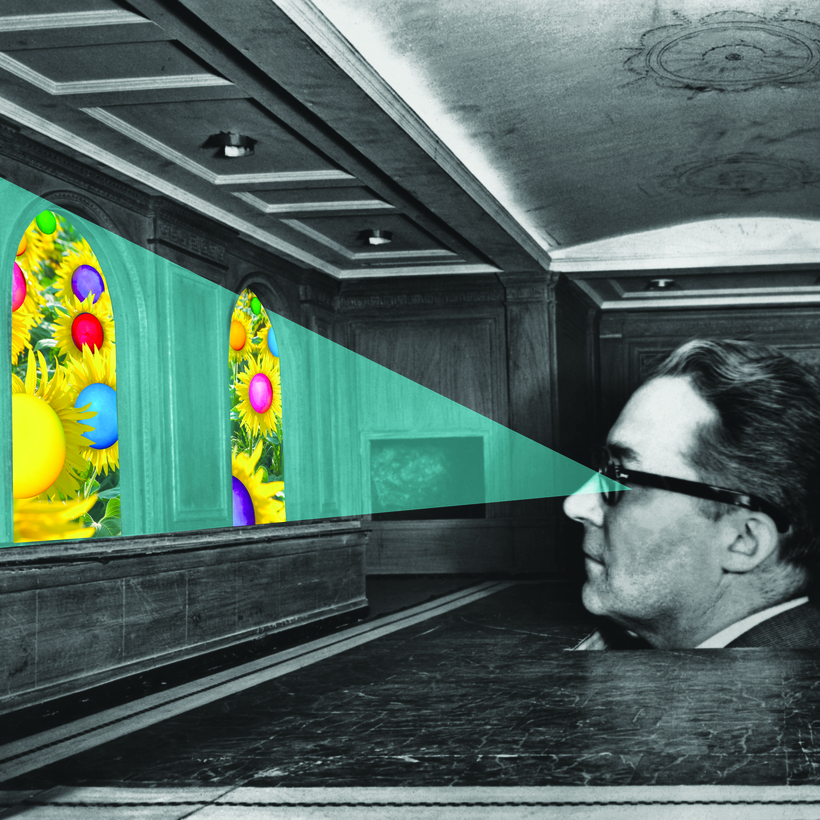In Jennifer Egan’s new novel, The Candy House, Bix Bouton is the world-famous founder of the tech company Mandala. He is also unsettled, restless, thinking about the past, and worried about the future; like many luminaries, he’s worried that he might be out of good ideas. In disguise, and in part out of nostalgia for his student days, he attends an academic-discussion group, where a graduate student makes a stray comment about her research into externalizing animal consciousness.
This is the origin of one of the central conceits of The Candy House: the idea of externalizing your own consciousness in such a way that it is watchable and shareable. Bouton’s next product, Own Your Unconscious™, paves the way for a “Collective Consciousness” that involves uploading all your memories to a collective server; other people’s memories become as accessible as their Facebook photos. Most people do, eventually, upload their consciousness to the collective, though some abstain. It becomes a recurrent feature of the inter-related stories in The Candy House, a sequel of sorts to Egan’s 2010 novel, A Visit from the Goon Squad.
Many of the characters are in difficult, ethically murky lines of tech-adjacent work. One person is employed at what is essentially a data-harvesting site, trying to stop people from eluding its methods of collection. Another has a job categorizing human interactions into stock elements, scouring movies and TV shows for things such as “How Dare You?” and “A Slap in the Face” and assigning them algebraic values. Another is a beautiful woman hired as a citizen spy to steal the secrets of powerful men by using advanced surveillance tools inserted into her eyeballs and ears.
It is Egan’s great gift that these stories nevertheless feel deeply human.The absurdist science-fiction elements act as a kind of backdrop for poignant affairs of the heart: marriages going sour or stale, love affairs that didn’t quite unfold, the power dynamics of a childhood friendship. One character thinks, “Anyway, we’re all in our fifties—do people even ask what we’re ‘doing’ anymore? Hasn’t that already been decided?”
Ennui, lost love, a sense of too-lateness, bitterness, jealousy—these make up The Candy House. Technology infuses the themes with new and distinct angles, but they remain fundamental to how Egan sketches her fictional world.
It is Jennifer Egan’s great gift that her science-fiction stories of technology and collective consciousness nevertheless feel deeply human.
At the heart of the novel are questions about collectivity. Which forms of it are good and which are bad—or is it both, or neither? What happens when sharing becomes near-total, and how does that create closeness and distance for the people engaged in it? What happens if you refuse to participate?
Some of these same questions animated A Visit from the Goon Squad too—that book ends on a scene of a massive concert, one brought about by headsets and a form of early social media. But they become more explicit and fraught in The Candy House, which features a smattering of the same characters and those loosely connected to them.
At times, The Candy House suffers from a kind of sequel problem. In some ways it feels written for those in on the joke, and pieces of the plot feel dutifully rehashed, a kind of reunion tour of sorts. One wonders if a version of this novel written without the constraint of trying to replay the greatest hits of its predecessor might have more fully delivered on its potential.
Ennui, lost love, a sense of too-lateness, bitterness, jealousy—these make up The Candy House.
Still, Egan remains a master of the form, that of the interlinked but not always connected stories, which provide glimpses of lives that are both brief and deep. She weaves them together in ways that are not obvious—and that come to form their own kind of collective, a loose web of interlinked people brought together and wrenched apart and brought together again through surprising channels: tennis matches, art in the desert, and the making of music. Always music.
One character, Bix’s son Gregory, objects to the technologically induced collective. He is wracked by grief and unable to leave his bed, but one winter’s day he finds himself outside, looking out at the snow and the birds, realizing that he is accessing a collective of sorts himself. And, Egan’s work suggests, it might be fiction that can provide us some access to this.

Sophie Haigney is the Web editor at The Paris Review. She writes about books and culture for The New York Times, The New Yorker, Slate, and other publications

